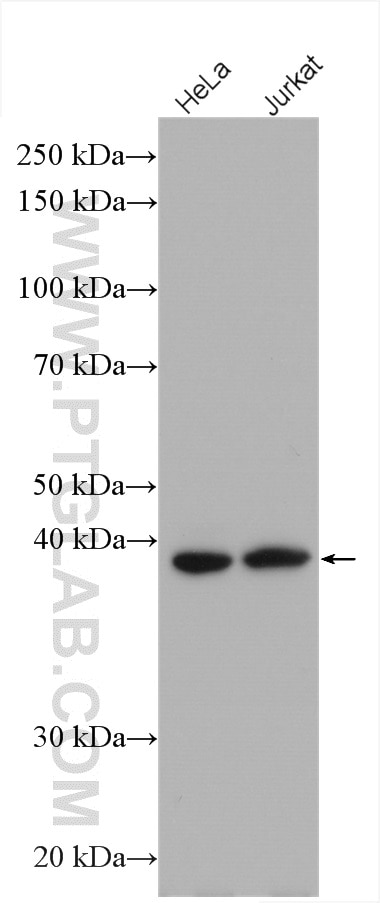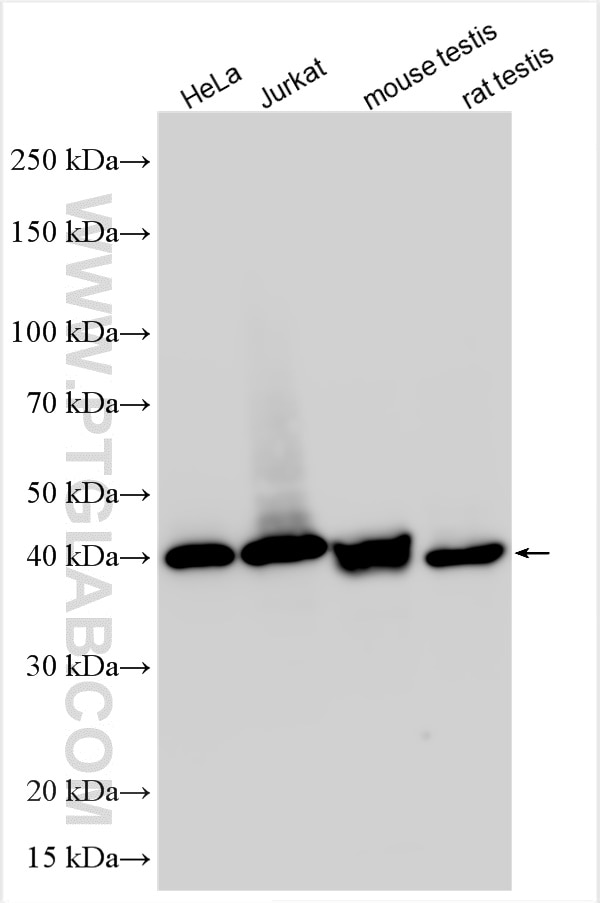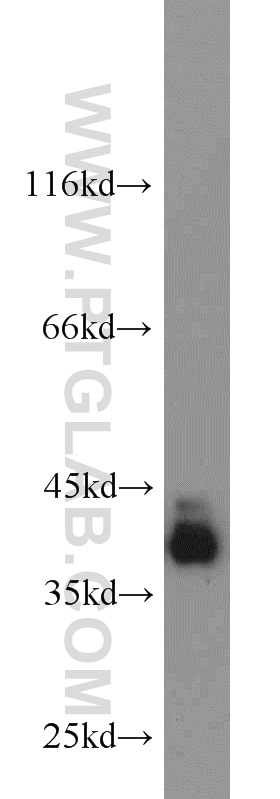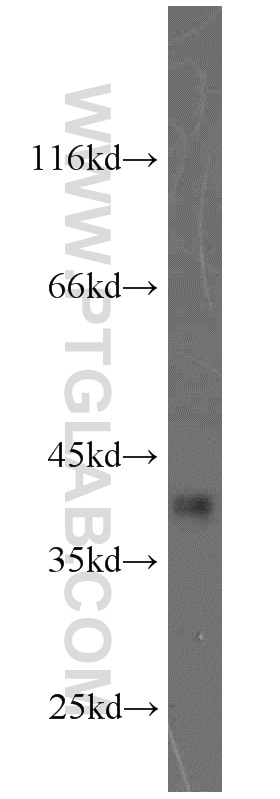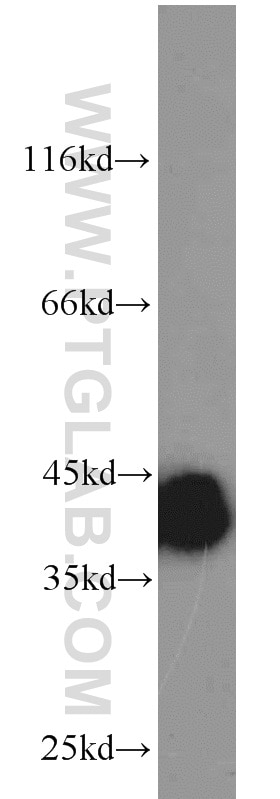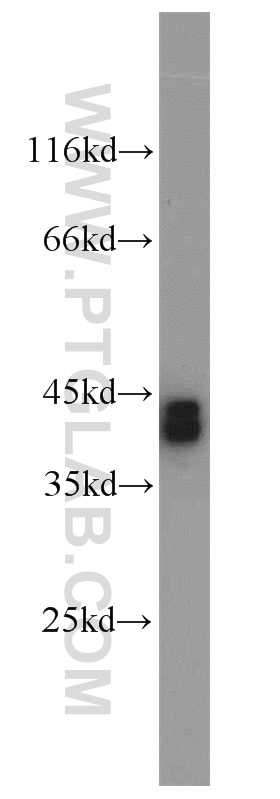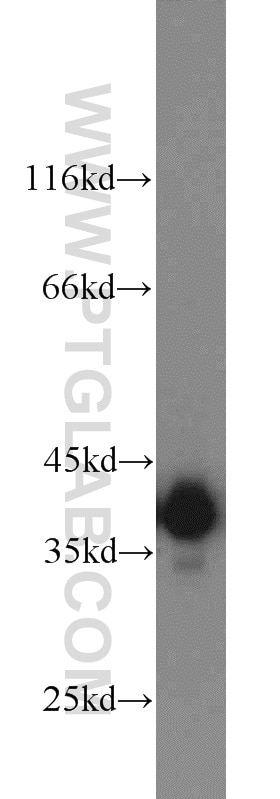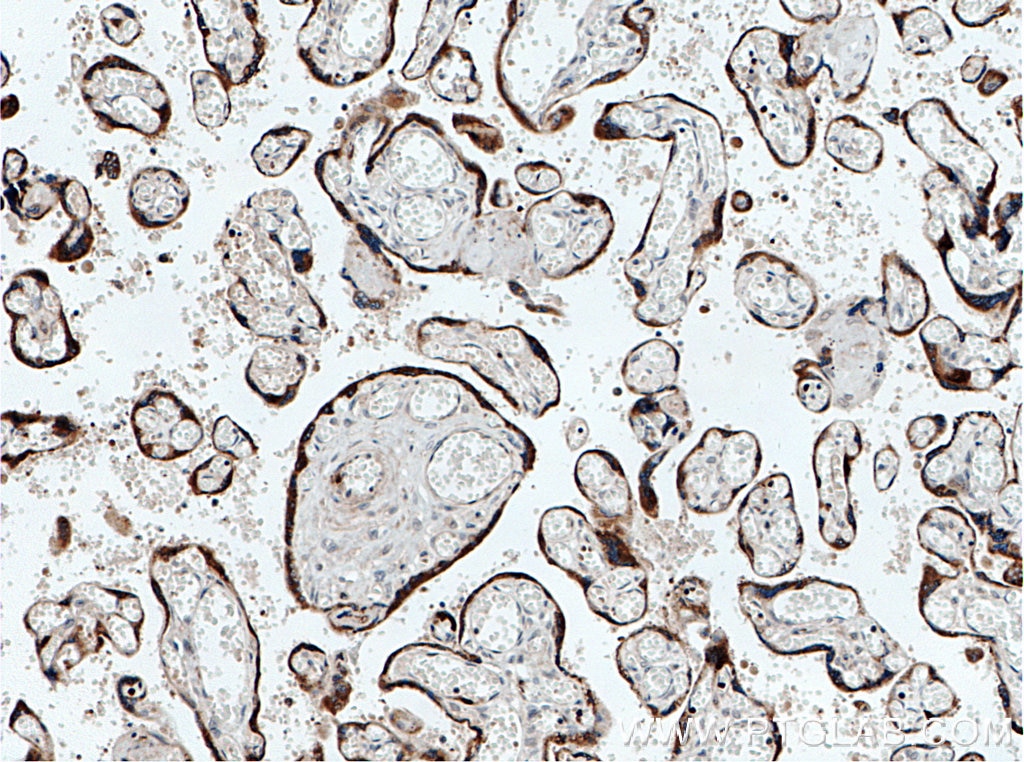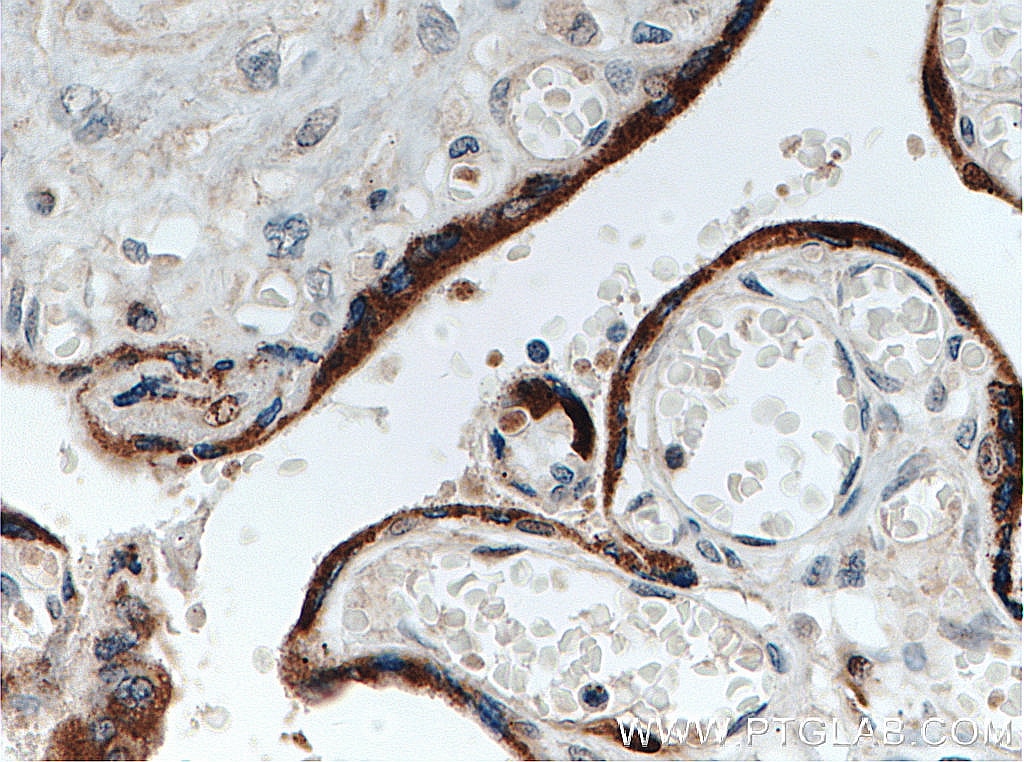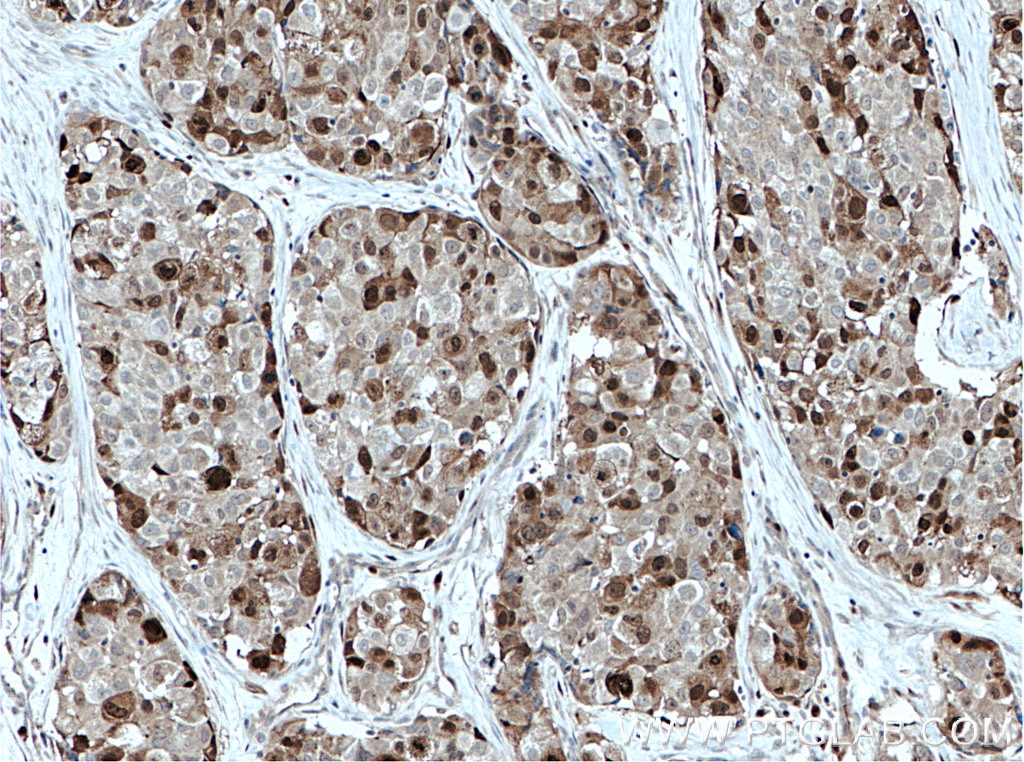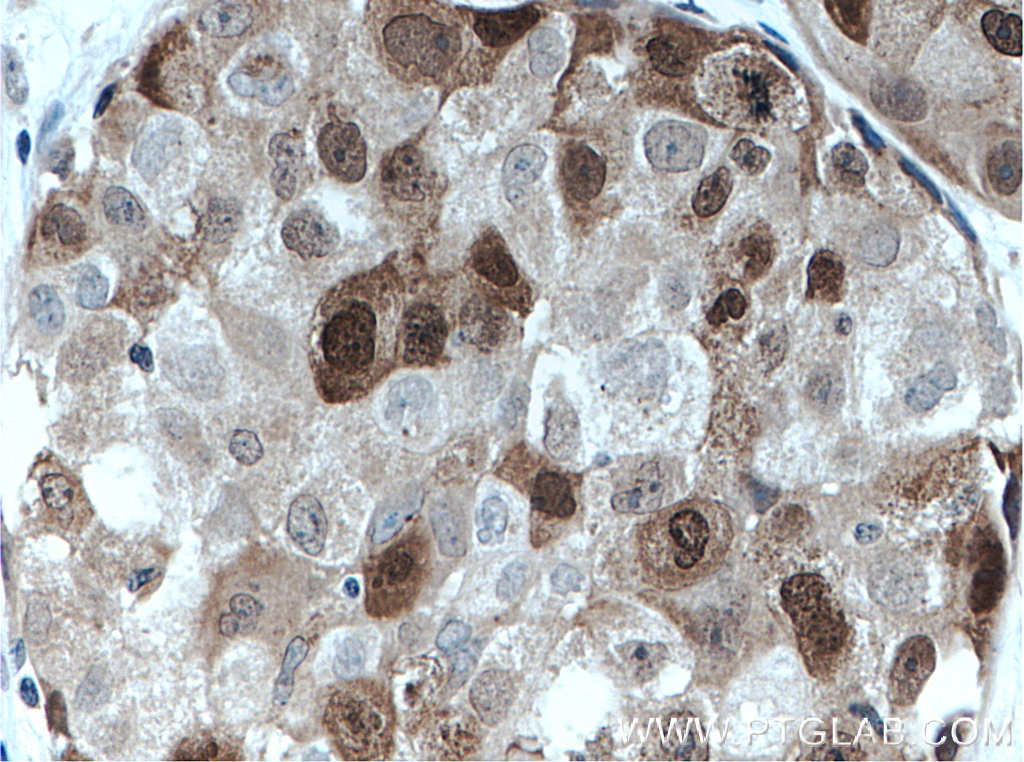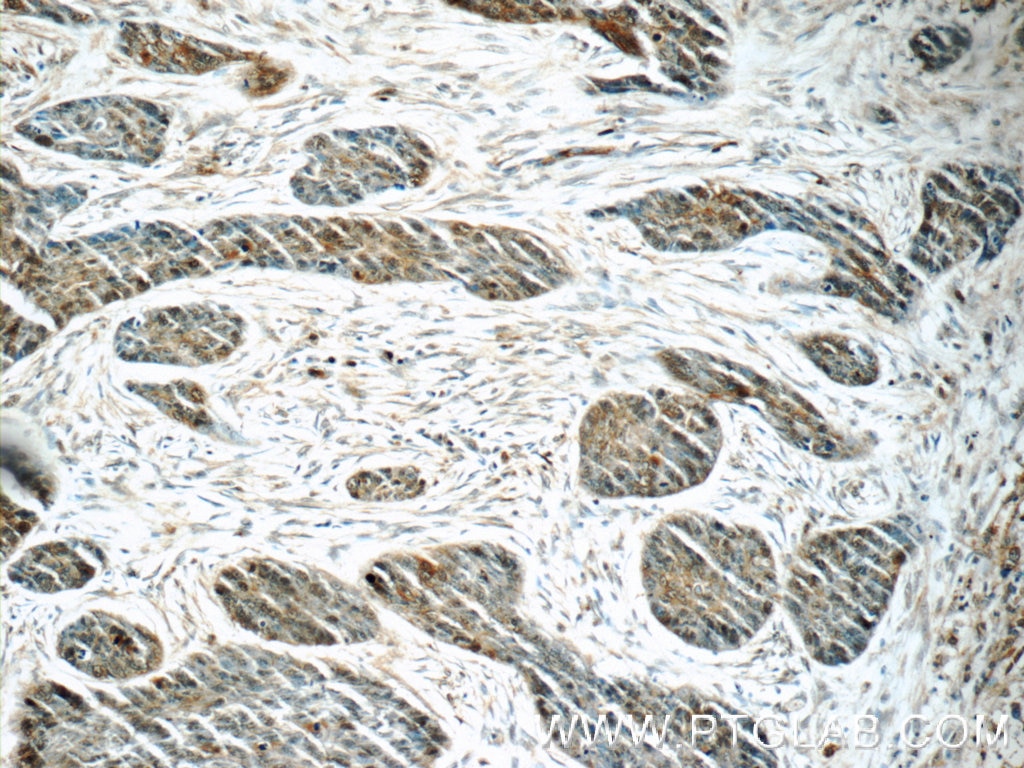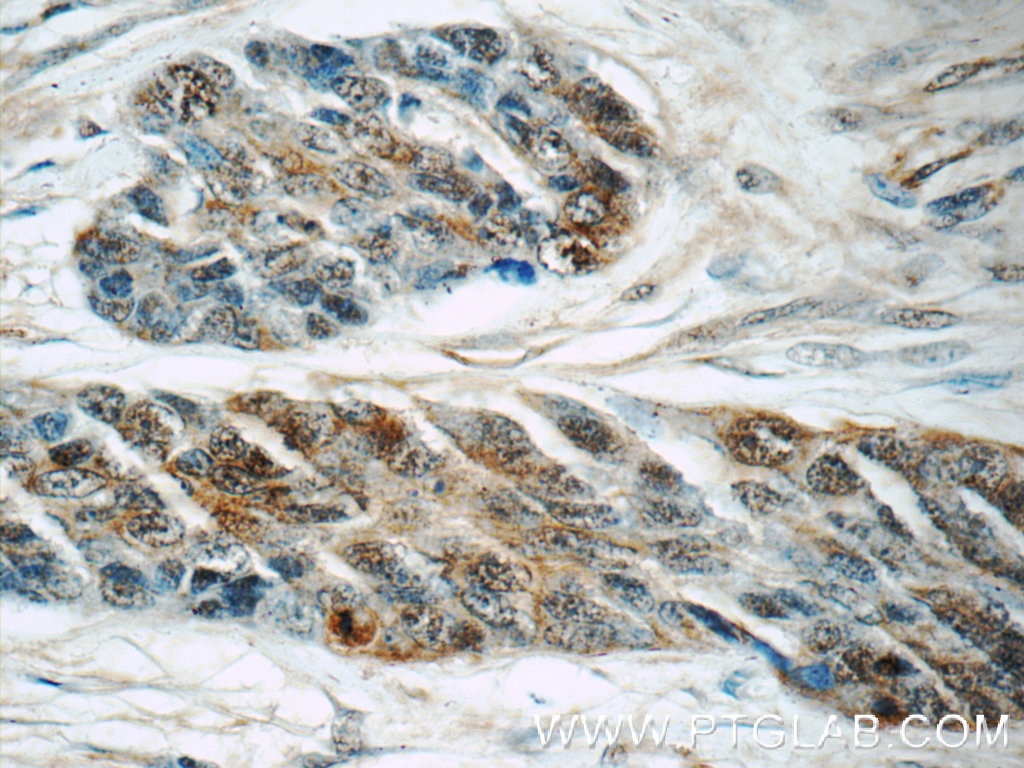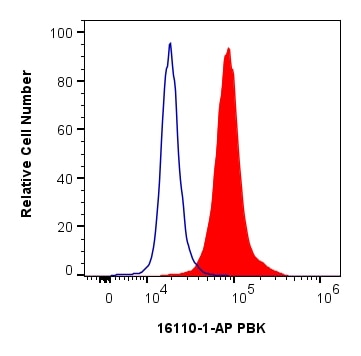- Featured Product
- KD/KO Validated
PBK/SPK Polyklonaler Antikörper
PBK/SPK Polyklonal Antikörper für WB, IHC, FC (Intra), ELISA
Wirt / Isotyp
Kaninchen / IgG
Getestete Reaktivität
human, Maus, Ratte
Anwendung
WB, IHC, IF, FC (Intra), IP, CoIP, ELISA
Konjugation
Unkonjugiert
Kat-Nr. : 16110-1-AP
Synonyme
Geprüfte Anwendungen
| Erfolgreiche Detektion in WB | HeLa-Zellen, Jurkat-Zellen, Maus-Eierstockgewebe, Maushodengewebe, NIH/3T3-Zellen, Rattenhodengewebe |
| Erfolgreiche Detektion in IHC | humanes Plazenta-Gewebe, humanes Lungenkarzinomgewebe, humanes Hautkrebsgewebe Hinweis: Antigendemaskierung mit TE-Puffer pH 9,0 empfohlen. (*) Wahlweise kann die Antigendemaskierung auch mit Citratpuffer pH 6,0 erfolgen. |
| Erfolgreiche Detektion in FC (Intra) | HepG2-Zellen |
Empfohlene Verdünnung
| Anwendung | Verdünnung |
|---|---|
| Western Blot (WB) | WB : 1:3000-1:10000 |
| Immunhistochemie (IHC) | IHC : 1:50-1:500 |
| Durchflusszytometrie (FC) (INTRA) | FC (INTRA) : 0.80 ug per 10^6 cells in a 100 µl suspension |
| It is recommended that this reagent should be titrated in each testing system to obtain optimal results. | |
| Sample-dependent, check data in validation data gallery | |
Veröffentlichte Anwendungen
| KD/KO | See 3 publications below |
| WB | See 7 publications below |
| IHC | See 3 publications below |
| IF | See 3 publications below |
| IP | See 2 publications below |
| CoIP | See 1 publications below |
Produktinformation
16110-1-AP bindet in WB, IHC, IF, FC (Intra), IP, CoIP, ELISA PBK/SPK und zeigt Reaktivität mit human, Maus, Ratten
| Getestete Reaktivität | human, Maus, Ratte |
| In Publikationen genannte Reaktivität | human, Maus, Ratte |
| Wirt / Isotyp | Kaninchen / IgG |
| Klonalität | Polyklonal |
| Typ | Antikörper |
| Immunogen | PBK/SPK fusion protein Ag9033 |
| Vollständiger Name | PDZ binding kinase |
| Berechnetes Molekulargewicht | 322 aa, 36 kDa |
| Beobachtetes Molekulargewicht | 36-40 kDa |
| GenBank-Zugangsnummer | BC015191 |
| Gene symbol | PBK |
| Gene ID (NCBI) | 55872 |
| Konjugation | Unkonjugiert |
| Form | Liquid |
| Reinigungsmethode | Antigen-Affinitätsreinigung |
| Lagerungspuffer | PBS with 0.02% sodium azide and 50% glycerol |
| Lagerungsbedingungen | Bei -20°C lagern. Nach dem Versand ein Jahr lang stabil Aliquotieren ist bei -20oC Lagerung nicht notwendig. 20ul Größen enthalten 0,1% BSA. |
Hintergrundinformationen
PBK(PDZ-binding kinase) is also named as TOPK, CT84, Nori-3, SPK and belongs to the MAP kinase kinase subfamily. PBK may have a role in the regulation of cellular proliferation and progression of the cell cycle. It has a characteristic cdc2ycyclin B phosphorylation site(SyT-P-X-KyR) at its N terminus,which is conserved across species, and it is phosphorylated in a cell cycle-dependent manner at mitosis, and that this phosphorylation is required for its activation(PMID:10779557).
Protokolle
| PRODUKTSPEZIFISCHE PROTOKOLLE | |
|---|---|
| WB protocol for PBK/SPK antibody 16110-1-AP | Protokoll herunterladen |
| IHC protocol for PBK/SPK antibody 16110-1-AP | Protokoll herunterladenl |
| STANDARD-PROTOKOLLE | |
|---|---|
| Klicken Sie hier, um unsere Standardprotokolle anzuzeigen |
Publikationen
| Species | Application | Title |
|---|---|---|
Genomics Proteomics Bioinformatics Specific Regulation of m6A by SRSF7 Promotes the Progression of Glioblastoma. | ||
Invest Ophthalmol Vis Sci Single-Cell Transcriptomics Reveals Cellular Heterogeneity and Complex Cell-Cell Communication Networks in the Mouse Cornea | ||
Biomolecules Identification of a Fibroblast-Related Prognostic Model in Glioma Based on Bioinformatics Methods | ||
Invest Ophthalmol Vis Sci Single-Cell RNA Transcriptome Helps Define the Limbal/Corneal Epithelial Stem/Early Transit Amplifying Cells and How Autophagy Affects This Population.
| ||
Front Endocrinol (Lausanne) PBK/TOPK Inhibitor Suppresses the Progression of Prolactinomas. |
